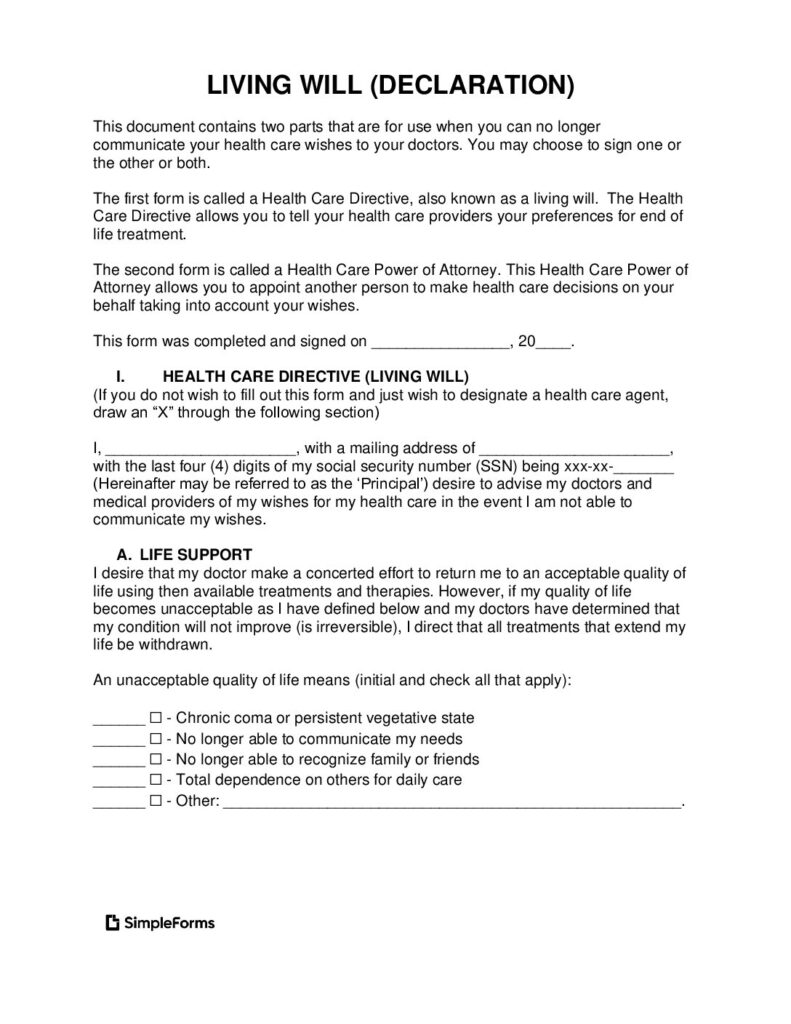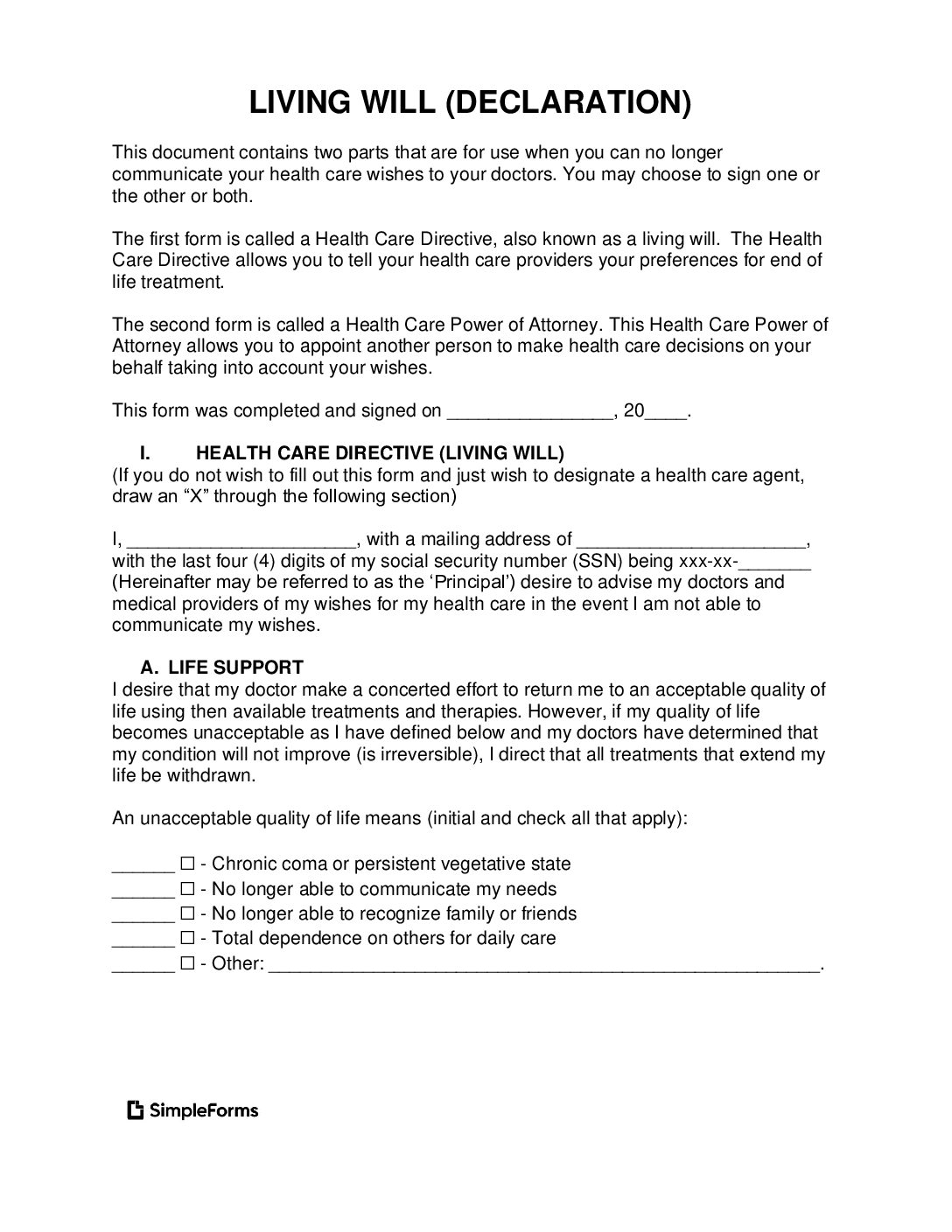A living will template, also known as an advance directive, is a legal document that allows you to state your medical treatment preferences in case you become unable to communicate them due to illness or incapacity.
Last Will and Testament Template
Health Care Directive and Power of Attorney
A Living Will has two main parts: a Health Care Directive and a Health Care Power of Attorney.
Health Care Directive
A Health Care Directive lets you outline your preferences for medical treatment if you can’t communicate. It covers the following:
- What you consider an “unacceptable quality of life,” like being in a chronic coma or depending totally on others.
- Choices about life support and specific treatments (like CPR or ventilation) that you might not want.
- Your wishes for end-of-life care, including hospice and funeral plans.
Health Care Power of Attorney
A Health Care Power of Attorney form lets you pick someone to make health care decisions for you if you can’t speak for yourself. The form includes the following:
- The agent’s ability to make choices about all medical treatments and access your health records.
- Options for them to consent to mental health hospitalization.
- A backup agent in case your first choice isn’t available.
- You’ll need to sign this document, and it should be witnessed by two people or notarized to make it official.
How to Write a Living Will Template: Video Tutorial
What is a living will template used for?
A living will template outlines the types of medical interventions that you do or do not want to receive in certain situations. These may include health treatments.


